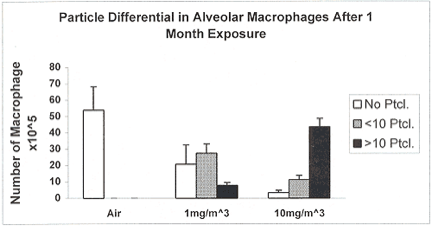New Scientist Magazine (3 July 04)
NSW: This article describes genetic damage to white blood cells of human mothers and babies. Researchers found equal levels of PAH-induced DNA damage in both mothers and babies. The researchers explained this means that fetuses must be 10 times as vulnerable to PAH damage as adults. "What gets across (the placenta) is not detoxified, and the damage to the DNA is not repaired in the fetus as it is in the mother."
PAHs (polycyclic aromatic hydrocarbons) emissions from vehicles and woodheaters. A NSW EPA study measured PAHs in several cities. Mean airborne concentrations (ng/m3) in winter were 4.47 in Sydney, 1.71 in Newcastle, 2.68 in Newcastle and 8.62 in Armidale. In the ACT, woodheating is responsible for 16 of the total of 24 tonnes of PAH emitted to the air. In the Sydney Metropolitan airshed, woodheating emits 72 of 150 tonnes of PAH. Sydney's summer PAH concentrations were 0.62 ng/m3, 86% lower than wintertime concentrations.
'Dioxins' is a term used to describe a group of 210 compounds or `congeners' which contain either a dibenzo-para-dioxin or dibenzofuran nucleus substituted with chlorine.
Dioxins are highly toxic substances generally found at such extremely low concentrations that they challenge the limits of scientific measurement. They have been a source of international concern because they are a known by-product of some combustion processes and they do not readily break down, but persist in the environment.
A number of dioxin congeners have been shown to cause adverse health effects in humans, including cancer. Several international organizations have classified the most toxic congener-2,3,7,8-tetrachlorodibenzo-para-dioxin (2,3,7,8-TCDD)-as a human carcinogen.
Over the past 10-20 years, programs have been in place in NSW and elsewhere to eliminate known sources of dioxins from the manufacture of chemicals, including pesticides, emissions from waste incinerators and industry, and more diffuse sources such as backyard burning. These programs have resulted in significant reductions in their emissions.
US assessment of dioxin toxicity
For three years, the United States Environmental Protection Agency (EPA) has been carrying out a thorough, public review of dioxin toxicity. In a draft published in May they presented their most recent conclusions:
The US EPA has previously stated that dioxins do cause cancer in humans. In the recent draft they estimate risks of cancer due to dioxins in the general population. Existing levels of dioxins in the US population may cause cancer in one in every ten thousand or even in one in every thousand people in a lifetime. In the UK, this would be between 6,000 and 60,000 cancers in a lifetime of 60 years, or between 86and 660 cancers a year.
Non-cancer effects include damage to reproductive, hormone and immune systems. These effects of dioxin, in animals and humans, are much worse than was previously thought. The EPA says that some of these effects are already occurring in the US population. In the UK, we have, if anything, higher levels of dioxins in our bodies.
On average, we are likely to have body burdens of 9 ppt of dioxin TEQs. The US EPA states that monkeys get endometriosis at 27 ppt. Decreased testosterone occurs in men at 13 ppt. Altered glucose tolerance (suggesting the threat of diabetes occurs at 14 ppt in one study. Enhanced viral susceptibility is found in mice at 7 ppt, implying that we could be less resistant to viral illness at our current body level of dioxins. Dioxins stimulate the production of certain enzymes, which could have effects on cell processes, and this effect is found in rats at 1 pp. So virtually the whole human population could already be experiencing these subtle changes.
The effects of the wood smoke on the immune system

Figure 11. Percentage of macrophages containing none, <10, or >;10 carbonaceous particles after 1 month of exposure to air or to wood smoke at 1 or 10 mg particles/m3.
The effects of the wood smoke on the immune system were investigated by analyzing the proliferation of T cells from the lung-associated lymph nodes and from spleen in response to concanavalin A (Con A). T cells from spleens of both the 1 and 10 mg/m3 rats had reduced incorporation of 3H-thymidine in response to activation with 0.3 and 1 mg/well of Con A. Similarly, T cells from lung-associated lymph nodes had reduced proliferation in response to Con A. These results indicate that not only the T cells associated with the lung, but also circulating T cells were affected by the wood smoke exposure. This may at least in part explain why respiratory tract infections are more common in populations using wood for cooking and heating. Pathological changes in the airway epithelia are being examined using nasal, tracheal, laryngeal, and lung tissues that have been processed and stained with hematoxylin and eosin or Alcian Blue and Periodic Acid Schiff. Respiratory function tests were being done on rats exposed for 90 days. Urine and blood samples were preserved at -80oC for future analyses of biomarkers for wood smoke exposure.
